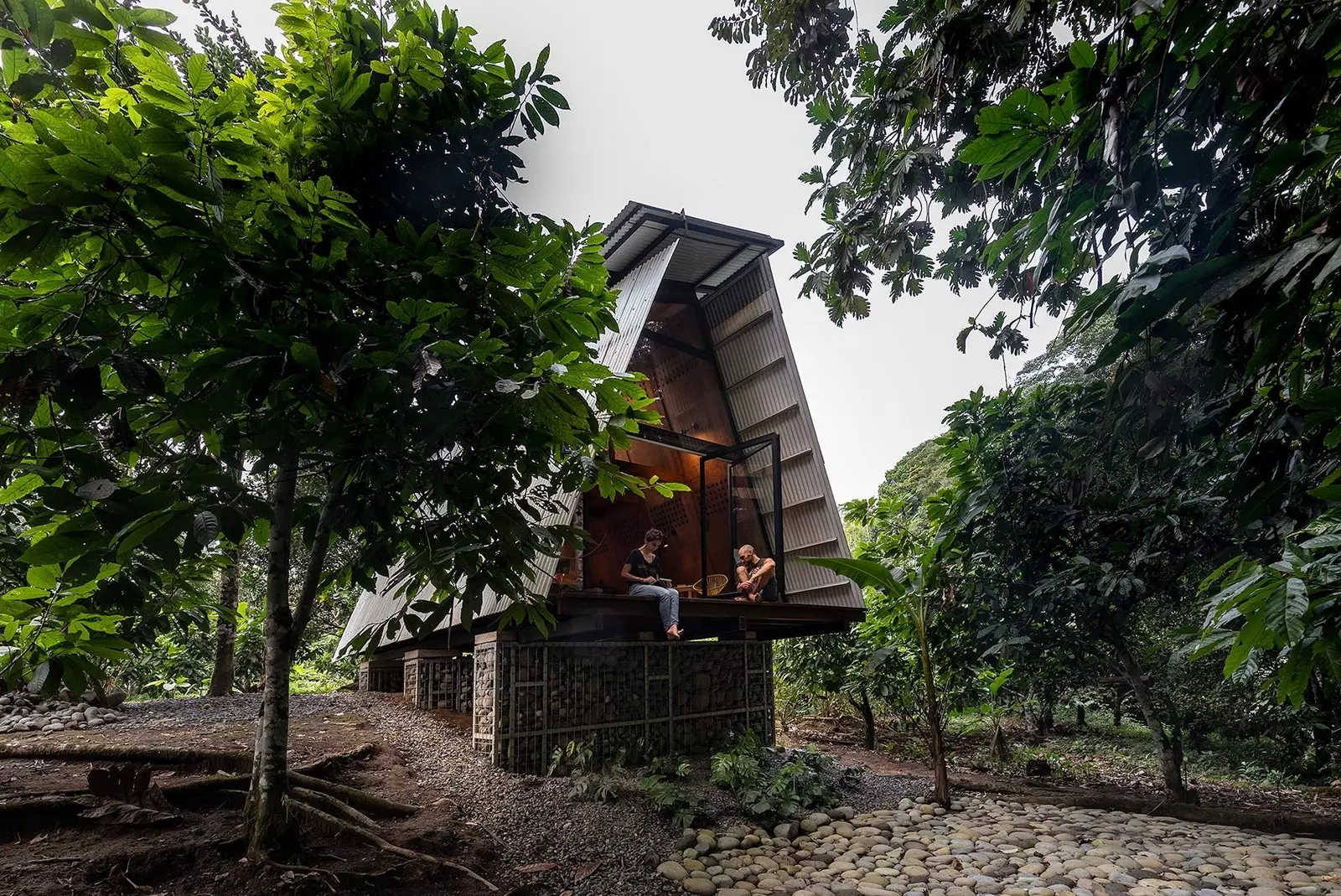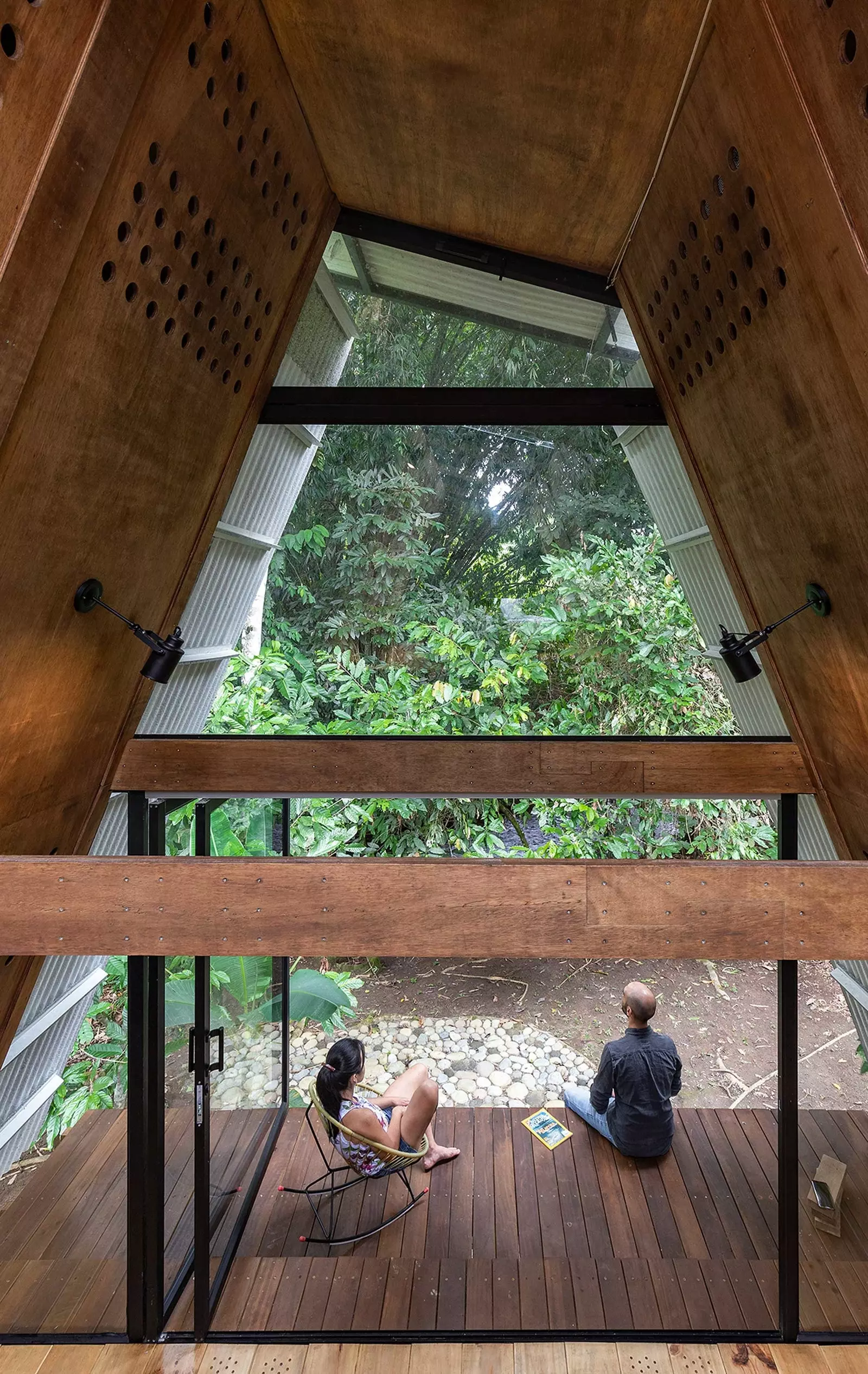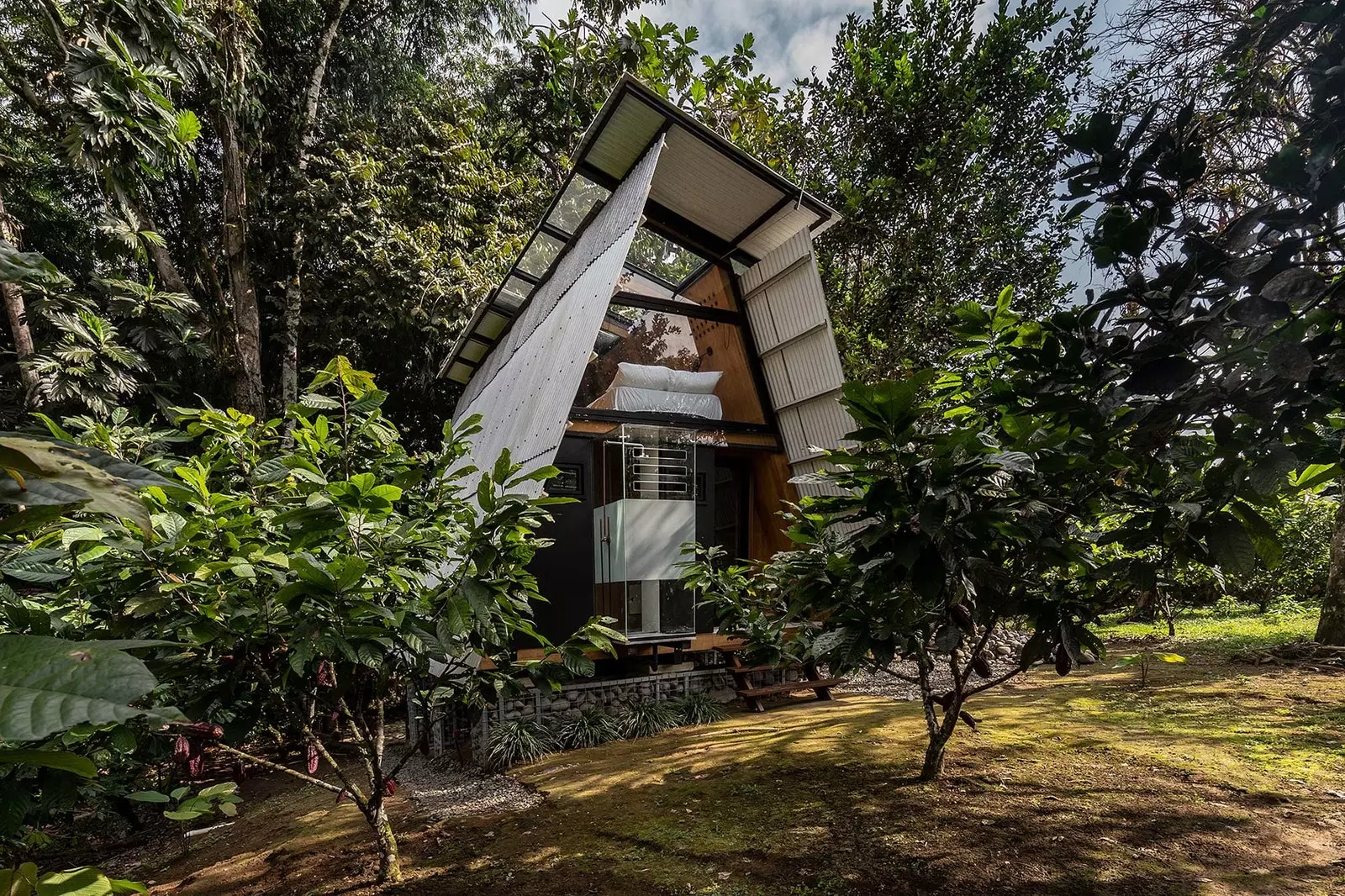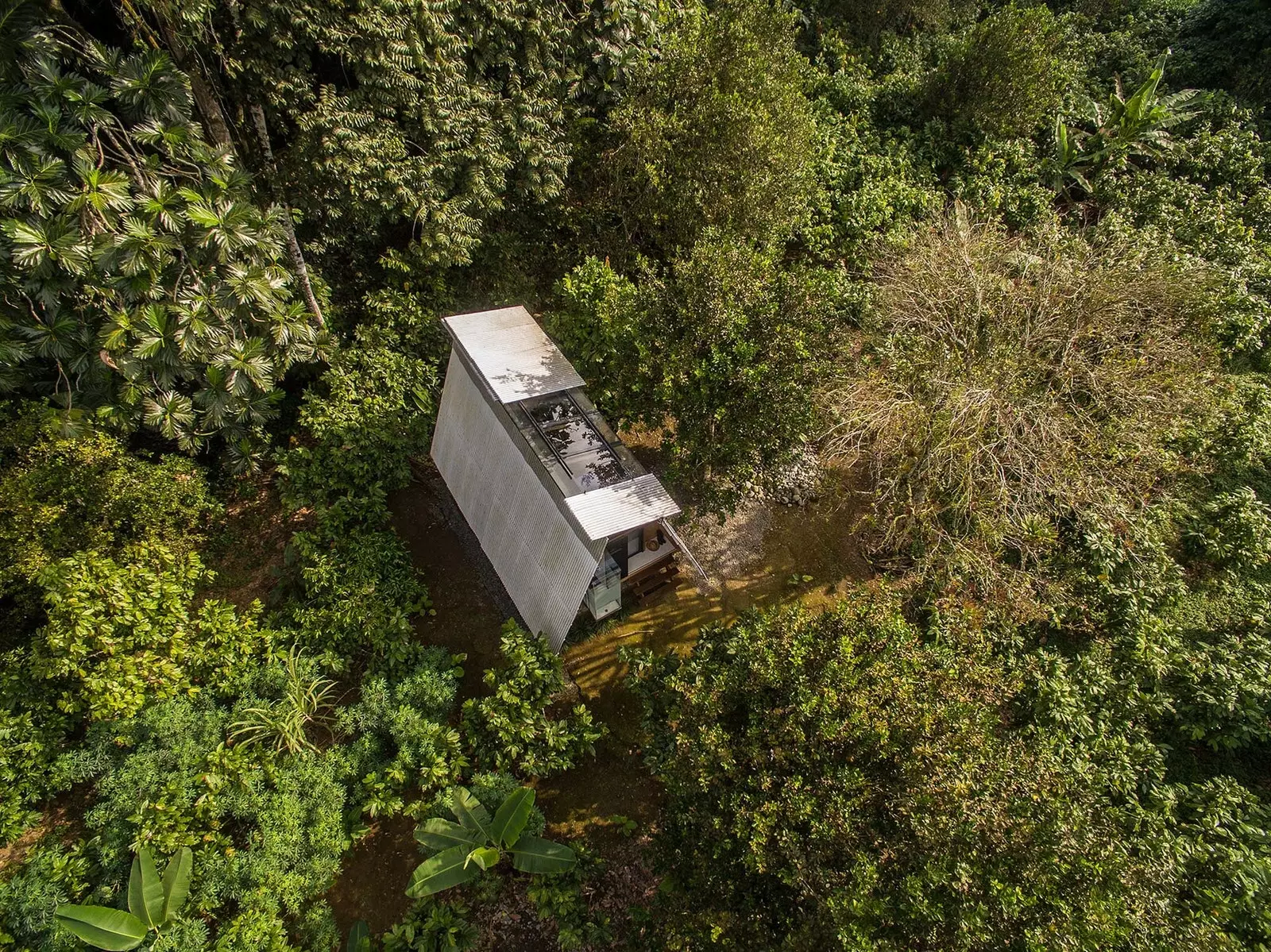
Huaira: the sustainable habitat that offers disconnection in the nature of Ecuador
Immersed in the depths of a cocoa, orange and banana polyculture, and in front of a small river called Roncador in Puerto Quito, Ecuador , the cabin materializes Huaira , the most recent construction sustainable with a zero carbon footprint by the architects Javier Mera and Diana Salvador.
The 45 square meter project is divided into two floors and is based on a family farm located in La Abundancia , in a place where a welcoming serenity converges with an atmosphere of inconceivable peace, which is capable of stimulating with all its impetus a close connection with the environment and the surrounding environment.
From this sharing with nature, it is not surprising that Huaira has found its inspiration in the concept of refuge , and in the act of transcending from a basic requirement to a collective need, since Diana Savior , one of its creators, is an architect and public manager, and has spent years debating between the public and private sectors. Until lately reflecting on her trajectory has led her to build this initiative in Ecuador together with Javier Mera , who has been focused on wood construction systems for a long time, in addition to being able to build them himself.

The project was conceived by Diana Salvador and Javier Mera
"Huaira was born as a specific need, a refuge outside the city, a contact with the essential, with nature, where the client and the architect are the same person. . This allows you to dream and give free rein to your imagination, but above all to land a need within a sensible solution that is consistent with reality. Solve a problem without generating more problems," the creators of the project told Traveler.es.
**HUAIRA: SUSTAINABILITY FIRST **
From the very beginning, the intrinsic desire to give life to a prefab cabin that adapts to the topography and the context, while complying with the principle of replicability, mobility and sustainability, all with the least possible impact on the carbon footprint.
So much so that each of the decisions and actions were governed by a series of specific design guidelines, being plywood the flagship element of construction , in addition to solid wood, stone, tetrapack, metal and glass. These six components came together in order to consolidate an environmentally balanced model.
"Today architecture cannot be conceived in any other way" , ratify. The materials, their assembly and operation allow the flexibility of disassembly and possible mobilization of the cabin to another location. Namely, Huaira can be disassembled, packed and relocated if at any time it is necessary.

Huaira is consolidated as an environmentally balanced model
The construction of the sustainable habitat was challenging, but it was completed in just 12 days. And after measuring the impact, the carbon footprint was found to be negative , thereby sequestering 3,360 kg of carbon and emitting 1,679 kg compared to a conventional concrete construction system.
"All resources were optimized : human talent, material, labor and logistics. From our perspective, sustainability implies giving a efficient response to environmental conditions , social and economic aspects of architectural design", add Diana Salvador and Javier Mera.
Likewise, they have also had to keep in mind the possible floods or rises of the river, and that is why have decided to raise the building , at the same time that they have used the cold air chamber generated under the structure to start up a ventilation system that allows facing the warm climate of Puerto Quito.
AN ALTERNATIVE ECOTOURISM IN ECUADOR
Huaira functions as a loft, it has a bathroom, a rest area on the upper floor, a kitchen and a social area on the ground floor. and although is equipped with everything you need , it is allowed to bring food or request food service, thanks to a menu focused on the consumption of products grown on the farm or generated in the area.
It should be noted that the cabin works independently and it is possible to rent it by managing the reservation here. Once it is confirmed, travelers will receive the necessary information to arrive and use the facilities of ecological tourism in Ecuador.

An alternative of ecological tourism in Ecuador
